A large number of cases of unpleasant pain in the lumbar region and spine are associated with diseases such as osteochondrosis. It affects about 40% of men and women aged 30-40 years and about 90% of the elderly. Therefore, the earlier the disease is diagnosed, the more the patient is examined, the higher the likelihood of stopping the progression of osteochondrosis and maintaining activity at an older age.
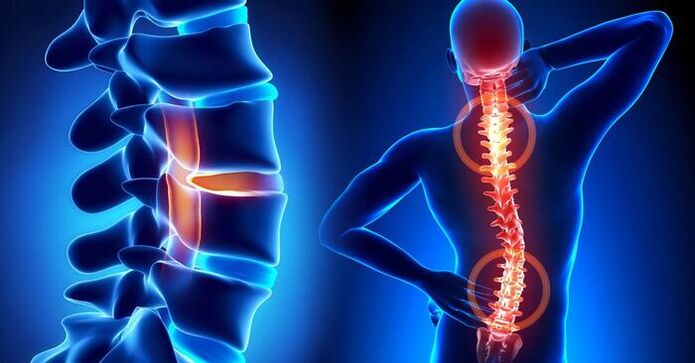
Definition of disease, causes of disease
So, what is osteochondrosis, where does it develop, what structure affects it, what are its treatment methods? The disease affects the spine and intervertebral tissues and is expressed as a violation of shape, density, elasticity, and sometimes even integrity. As a result, the distance between the vertebrae is reduced, the spinal space gradually loses its stability, pinches the nerves, the formation of hernias can develop, which is accompanied by back pain and discomfort during movement.
If we briefly describe the essence of osteochondrosis, then this is a gradual abrasion of the tissue of the intervertebral disc (cartilage), which causes instability of the spine. If left untreated, ligament and joint degradation develops, osteophytes appear, posture is disturbed, movement is accompanied by pain.
Causes of spinal osteochondrosis:
- an inactive lifestyle with a lack of muscle load;
- spinal cord injuries;
- strong systematic pressure on the spine;
- descent;
- overweight;
- hypothermia;
- hormonal and autoimmune diseases;
- toxic poisoning;
- congenital connective tissue failure;
- psychosomatic causes (stress, depression, etc. ).
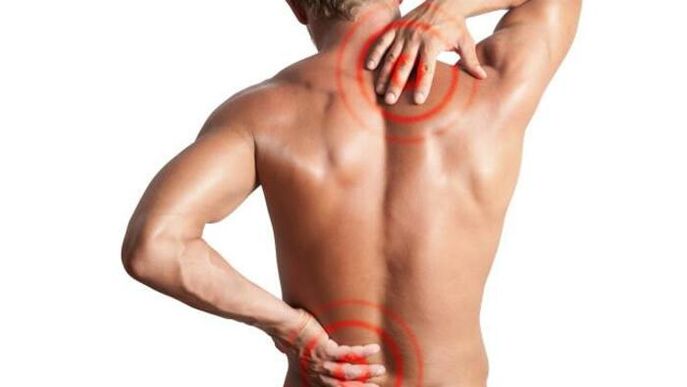
Symptoms of osteochondrosis
The disease is characterized by periods of remission and exacerbation with varying degrees of symptom severity. The main symptoms of spinal osteochondrosis, characteristic of the main disease types, lumbar, cervical and thoracic:
- localized pain in certain areas of the spine;
- pain syndrome of the reflected type associated with damage to nearby musculoskeletal tissue;
- myelopathy and radiculopathy are caused by compression of the nerve endings of the spinal cord and blood vessels.
Depending on which part of the spine is affected, the list of symptoms of osteochondrosis may vary. Namely: patients noted tingling in the muscles, numbness in the limbs, other sensory disturbances, decreased strength in the arms and legs, headache and pain in the heart, back pain.
Pathogenesis of osteochondrosis
Before the elastic fibrous core of the intervertebral disc begins to lose elasticity and deform, several processes involving osteochondrosis occur in the human body:
- cramps, dystonia, inflammation;
- decreased blood circulation;
- damage to nerve cell processes.
Subsequently, cracks appear on the deformed annulus, disc protrusion develops, and a hernia forms. Typically, these suggestive factors of spinal disease develop in childhood or adolescence and are often caused by poor posture, scoliosis, sports injuries, infectious diseases, or congenital vascular disorders.
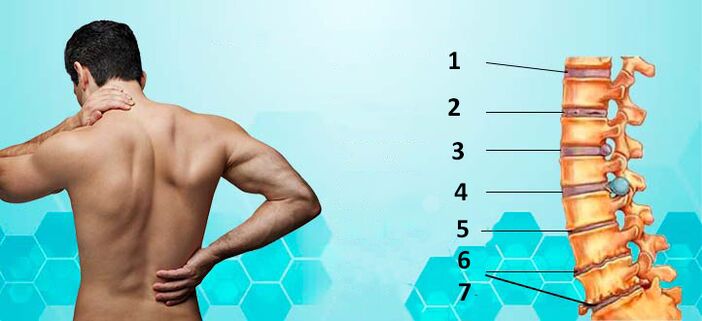
Stages of osteochondrosis
There are three stages in the development of spinal osteochondrosis:
- the first, in which the intervertebral disc begins to decrease in height, acquires a flat shape, loses moisture, elasticity, can stand out;
- the latter develops without treatment and is indicated by violation of the fibrous ring structure of the vertebral disc, the appearance of cracks and the development of instability in certain areas of the spine;
- characterized by rupture of intervertebral cartilage, the development of hernias, the formation of osteophyte bone processes.
The symptoms of the development of spinal osteochondrosis become stronger from the first to the third stage.
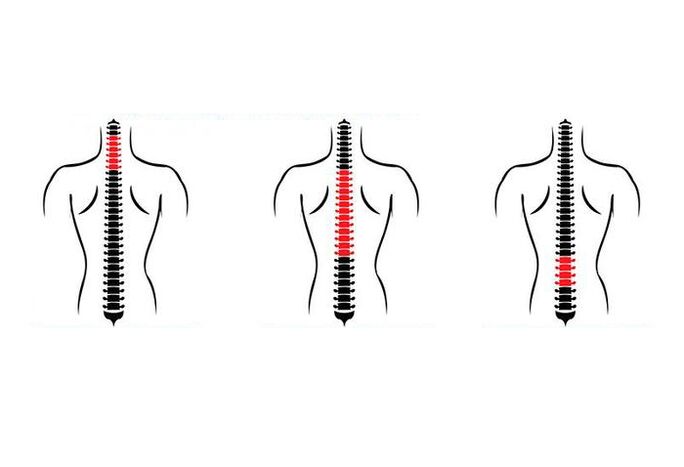
Classification of osteochondrosis
The classification of osteochondrosis is based on several signs, the main one being the localization zone. Distinguish:
- lumbar osteochondrosis;
- osteochondrosis of the cervical spine;
- osteochondrosis of the thoracic spine.
Osteochondrosis of the lumbar spine is manifested by pain in the lumbar region, which increases by turning the body, lifting weights. Pain can be given in the foot or both feet, which is characterized as pain. With acute syndrome, a hernia is suspected. With lumbar osteochondrosis, cramps in the leg muscles, skin peeling often occurs.
With the development of spinal osteochondrosis in the cervical spine, vertebrae 1-7 are affected. The disease is accompanied by headache in the back of the head, pain in the neck, collarbone, shoulders. Cramps may occur during rotation of the head, numbness of the upper limbs, a feeling of a lump in the throat.
With osteochondrosis of the spine in the thoracic region, patients worry about pain in the chest, shoulders, armpits, heart. Probably a feeling of shortness of breath, the development of an attack of intercostal neuralgia.
Osteochondrosis of the lumbar spine is the most common, in the thoracic region is the rarest.
Complications of osteochondrosis
If the patient thinks the treatment of osteochondrosis is too late, when the symptoms of the disease are pronounced, the following complications may arise:
- intervertebral hernia;
- spinal cord stroke;
- spinal kyphosis;
- prominence;
- radiculitis;
- paralysis of the lower limbs.
In the absence of treatment, the patient begins to suffer from a worsening condition, which is characterized by increased pain, restraint of movement, deteriorating general well-being. The most devastating complication of spinal osteochondrosis is deformity. Therefore, to avoid serious changes in the work of the musculoskeletal system, high -quality and timely treatment of osteochondrosis is required.

Diagnosis of osteochondrosis
Diseases such as osteochondrosis are primarily painful in the spine. But it is important to distinguish it from pain caused by problems other than intervertebral disc degeneration. To do this, the doctor conducts a step -by -step diagnosis, which includes:
- Take anamnesis, which implies a conversation between the specialist and the patient to identify the exact area of pain localization, a factor that gives rise to the deterioration of the condition. It is important to know the patient's occupation, the period when the problem with the spine began, when exacerbations occurred, the type of pain in the lumbar and other areas, what treatment methods the patient used.
- Physiological examinationallows you to determine body parts, quality of movements and actions performed, skin condition, level of pain sensitivity. The doctor, by palpation, determines the condition of the muscle tissue, the presence of seals, edema, etc.
- X-ray of the spine in two planesfor visual assessment of the situation. Allows you to determine vertebral displacement, the presence of osteophytes, salt deposition.
If the data collected to prescribe treatment is insufficient, or there is a suspicion of serious spinal pathology, the patient is given a CT scan and magnetic resonance imaging, which makes it possible to examine in detail the spine, vessels, soft tissues, neural processes and make a complete picture ofthe condition of the spine affected by osteochondrosis to determine treatment tactics.
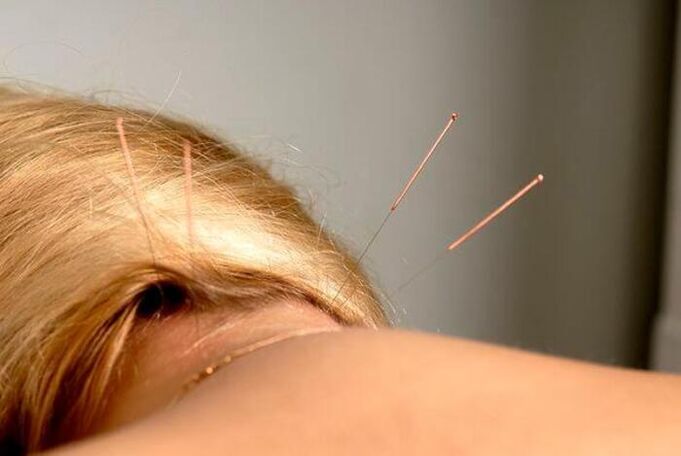
Treatment of osteochondrosis
Like any disease, osteochondrosis requires identifying the cause that triggers its development. Reducing the severity of symptoms is not the main stage, but the level of treatment is important, the outcome depends on several factors. In some cases, this is a complete cure, while in others it is the prevention of complications and deformities.
In the treatment of spinal osteochondrosis, a group of measures are used:
- changing the patient’s day regimen;
- prescribing medication to reduce symptoms;
- physiotherapy procedures (massage, acupuncture, electrophoresis, exercise therapy, etc. ).
Changing the daily regimen in the treatment of spinal osteochondrosis involves a decrease in the intensity of physical activity, bed rest with severe pain, the exclusion of sharp rotations and bends.
Medications for the treatment of spinal osteochondrosis
They can be divided into several groups:
- muscle relaxation to relieve pain, including tablets, injectable anesthetics and anti-inflammatory injections for osteochondrosis. Homeopathic preparations normalize the function of the thyroid gland, improve lymphatic drainage, have anti-inflammatory, detoxifying and immunomodulatory effects.
- non-steroidal anti-inflammatory drugs. When used in patients with osteoarthritis, there is a decrease in the development of inflammatory and destructive changes in the joints, an increase in the integrity, thickness and other cartilage features, and a stimulation of bone tissue repair.
- topical anti-inflammatory ointments and alternative transdermal patches. Such drugs have analgesic, antirheumatic, antipyretic and anti-inflammatory effects. The working mechanism is to reduce the production of inflammatory mediators, lower body temperature and pain.
- chondroprotectors;
- drugs for therapeutic analgesic restriction;
- Vitamin B.
Additional treatment
Of the additional funds that can be used to treat, alleviate the general condition and improve the function of the spinal and intervertebral discs, the most effective are shown:
- acupuncture;
- magnetotherapy;
- professional massage and self massage;
- physical education courses;
- manual therapy.
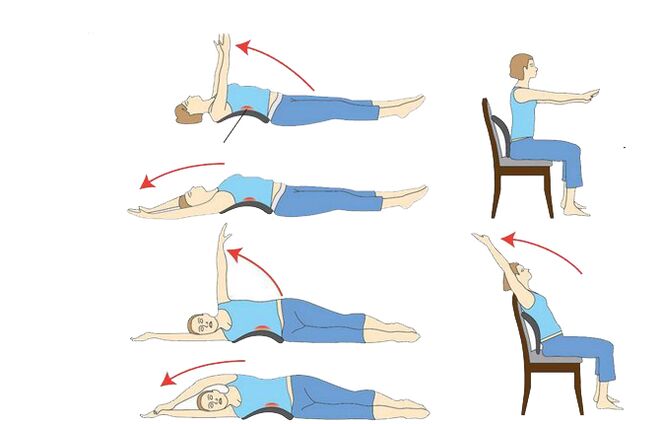
Prediction, prevention
If the spinal disease is not ignored, persists without serious complications, in 1. 5-2 months of competent treatment, the condition can be significantly improved, and the transition of the disease to a chronic form can be prevented. In difficult cases, doctors recommend surgical treatment.
Prevention of spinal osteochondrosis includes:
- adhere to a proper daily regimen, with changes in body position and moderate physical activity;
- periodic visits to the pool;
- weight control;
- wear comfortable shoes;
- balanced diet;
- sleeping on orthopedic pillows and mattresses;
- taking missing nutrients or preventive homeopathic remedies to boost immunity, improve overall health, and eliminate dystonia.
You should undergo a medical examination every year and see a doctor for treatment immediately after the onset of pain in the spine.
No matter what type of osteochondrosis we are talking about - lumbar, cervical or thoracic, attention to one’s health should be a good habit, especially when it comes to the basis of the entire musculoskeletal system - the spine.





































